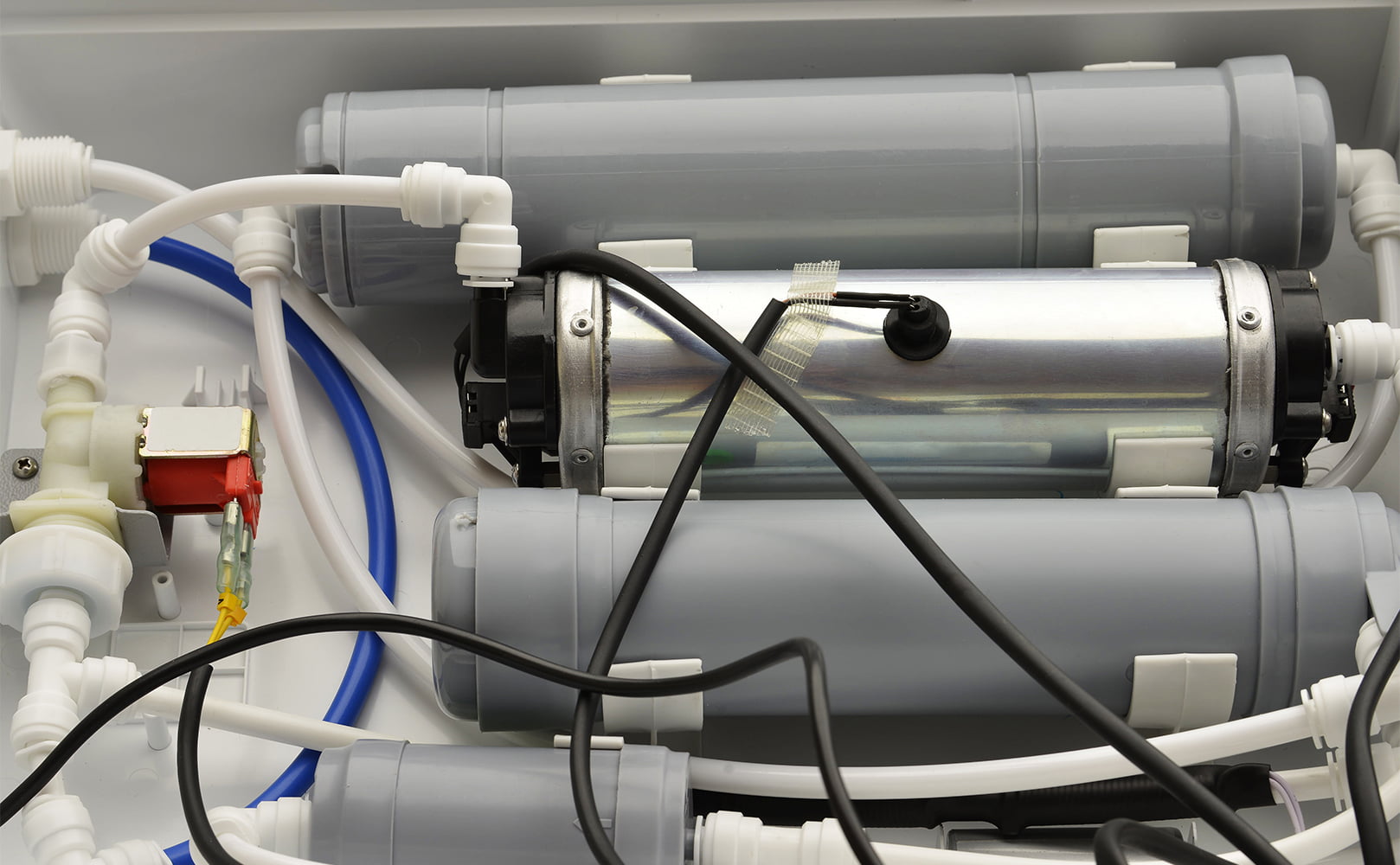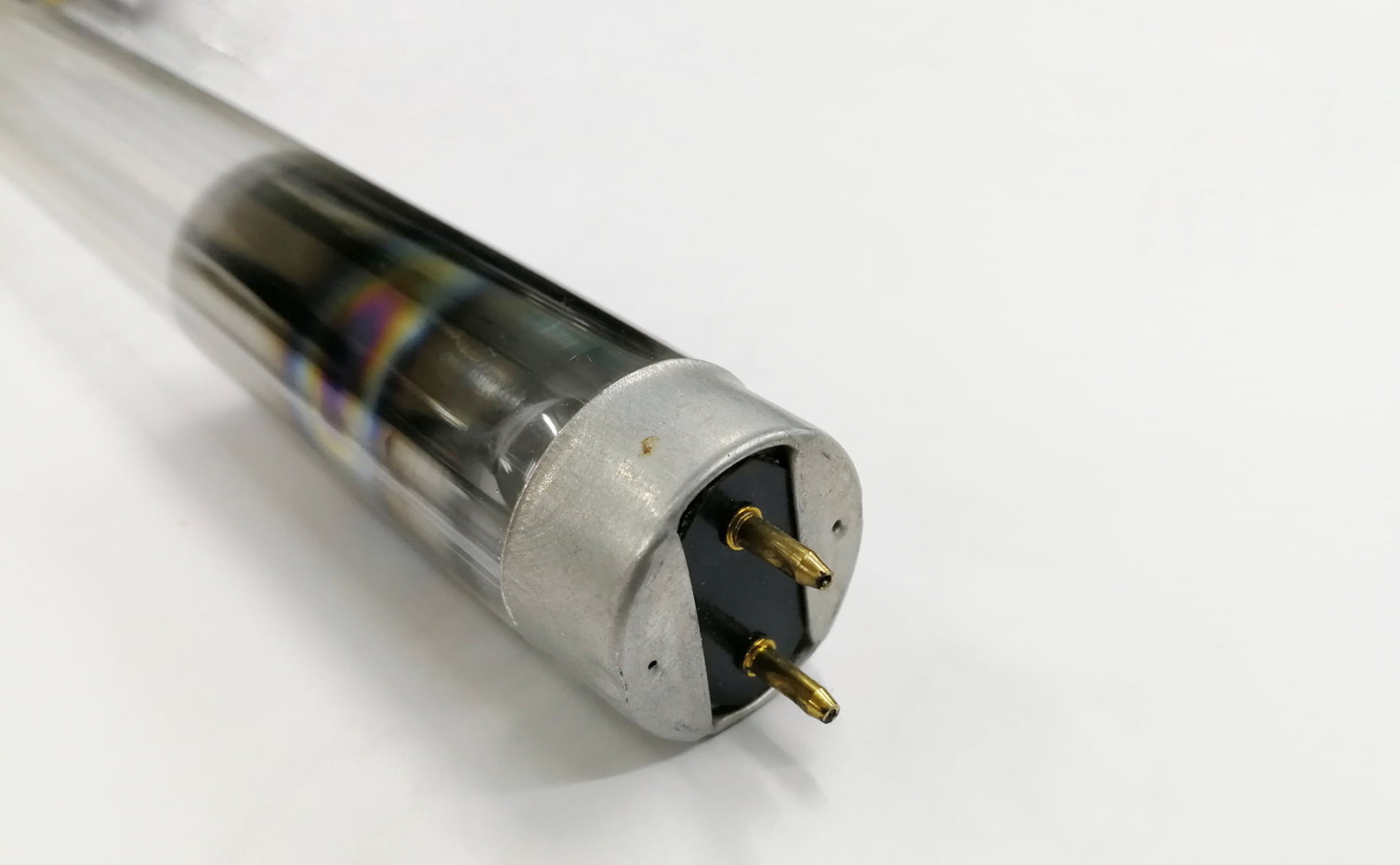Maintenance Cost of a UV Water Purifier – How Much Is It?
Written by: Gene Fitzgerald // Last Updated: Nov 14, 2022
This page may contain affiliate links. If you buy a product or service through such a link we earn a commission at no extra cost to you. Learn more.
A water purification system is not one-size-fits-all. Because water can contain varying types of contaminants, you need to invest in a system that targets each and provides maximum filtration.
If your water is microbiologically unsafe, a UV water purifier is your best bet. It targets unwanted living organisms, making your water safe and drinkable.
But like standard filtration systems, UV filters need regular maintenance causing additional expenses in the long term.
We’ll walk you through the maintenance costs of a UV water purifier in the guide below.
Key Takeaways
- UV light bulbs need to be replaced annually and cost around $80 to $130.
- The quartz sleeve, which costs $40 to $60, protects the UV lamp and should be cleaned yearly and replaced every two years.
- You can opt to have the maintenance done by an expert, which would charge you about $200 to $400 annually.
What’s a UV Water Purifier and How Does It Work?
A UV water purifier uses a powerful method to treat unsafe water: Ultraviolet light radiation. The UV light destroys the DNA of microorganisms which prevents them from reproducing.
These microorganisms include viruses, bacteria, cysts, fungi, and algae.
Drinking water exposed to such living organisms can easily make you sick. Once ingested, they quickly embed in your digestive system and replicate.
However, a UV water purifier exposes them to germicidal ultraviolet light. Radiation at 254 nm (nanometers) wavelength is strong enough to scramble the DNA of these microorganisms, restricting them from reproducing and providing you with potable water.
In fact, UV water purification is one of the most effective ways to prevent waterborne diseases, killing 99.9% of microorganisms in water without adding harmful chemicals.
What Is Inside a UV Water Purifier?
UV water purifiers typically include a chamber, also called reactor, which covers the entire system.
The UV lamp which emits the UV-C light sits inside, encased in a quartz glass sleeve. This sleeve needs to be transparent to allow for UV light penetration. As the light passes through the glass, it disinfects the water.
On a side note: Mercury vapor is used to power UV lamps. It fits into the UV lamps in the form of solid beads. If you look closely, you can see these tiny beads rolling inside the lamp.
Why the glass sleeve? The UV lamp is enclosed in glass to prevent direct water exposure – you know, water and electricity is a bad combination.
What’s more, the entire system is sealed using O-rings. This is what prevents leakages.
How to Maintain a UV Water Filter System
UV water filtration systems need routine maintenance for optimal functioning. Don’t worry, though, this is pretty simple and hassle-free.
Below is a list of task you should perform in order to make the most out of your UV water purifier.
1. Replacing the UV Lamp Annually
The UV lamp is the primary element of any UV filter. Therefore, it requires regular maintenance to ensure it targets maximum microbes swimming in your water. While conventional light bulbs burn out, UV lamps lose their effectiveness as the mercury inside of them is used up.
Eventually, UV intensity decreases to as little as 60% of what a new UV lamp can achieve.
Generally, this happens after using a lamp constantly for a year which equals 9,000 hours.
Thus, it is essential to replace UV lamps annually.
2. Cleaning the Quartz Sleeve Annually
Although UV water purifiers are used merely to kill bacteria etc. in a home water supply, it doesn’t indicate your water consists of living organisms only. Instead, it can contain all sorts of sediments, minerals, and other debris.
When dirt-laden water keeps crossing the UV system, they pile up on the UV quartz sleeve protecting the UV lamp.
A clouded sleeve certainly doesn’t allow enough UV light through. Consequently, the UV purifier will stop doing its job. Therefore, make sure you clean the quartz sleeve yearly to ensure optimal water disinfection.
3. Replacing the Quartz Sleeve Every 2 Years
Cleaning the quartz sleeve at least once every year is a must if you do not want to reduce your filter’s ability to kill microorganisms. However, if you deal with more stubborn water contaminants, it’s best to replace the quartz sleeve every two years.
The cleaner the sleeve, the better the UV light penetration.
4. Changing Pre-Filters
Most homeowners require a separate pre-filter alongside their UV system. Having a 5-micron sediment filter in place should be the bare minimum.
However, if your water is hard, you need a water softener alongside. And if you’re dealing with iron or manganese, you need a filter for that, too.
Pre-filters protect UV water purifiers and ensure their optimal operation. But, again, you are required to maintain these filters and change them occasionally to keep them up and running.
UV Water Purifier Maintenance Cost
Yes, UV water purifiers are low-maintenance but they need it anyhow. Knowing how frequently you need to maintain them is imperative to determine the overall costs.
UV lamps need yearly replacements to perform optimally. You can expect their reduced performance to become measurable sometime after one year or 9,000 hours of consistent use.
At this point, you need to replace the lamp if you want to continue targeting bacteria and viruses in your drinking water. The replacement would cost you around $80-$130 – if you go for a quality lamp. Of course, new lamps for whole house UV purifiers are more expensive than replacements for POU units.
And while UV lamps need yearly replacements, quartz sleeves should be swapped every 2 years. Don’t fret; however, it won’t cost you more than $40-60 apiece.
On a lighter note, DIY maintenance can be a hard row to hoe if you’re not handy around the house – closing the main water line, draining the water, and whatnot. If you want to save yourself the hassle, you can ask a professional to do the job for you, and if you do, it will add to the maintenance costs.
What an expert chooses to charge can vary depending on his skill and how much work is required. But, you can expect to pay somewhere around $200-400.
If you want to save these costs and trust your DIY skills, lucky for you, you can maintain everything yourself.
Advantages and Disadvantages of UV Water Purifiers
UV filters offer an excellent way to target pathogens. However, like most water purification systems, they have their set of pros and cons.
Pros
- Kill microorganisms. UV water purifiers destroy up to 99.9999% of microorganisms providing potable drinking water.
- Safe to use. The purifiers do not use hazardous chemicals that can have adverse health effects.
- Environmentally friendly. The UV treatment process neither wastes water – unlike some filtration systems – nor emits disinfection byproducts.
- Optimal flow rates. UV purifiers do not feature any type of filter media or membrane, which allows for high flow rates and water pressure.
- Easy installation and maintenance. The installation is pretty straightforward, and maintenance is as easy as replacing a light bulb once a year.
Cons
- Only targets microorganisms. Though UV water purifiers are excellent at targeting microorganisms, they do not remove any contaminants like salts, metals, and chemicals. So, you’ll need an additional filtration to get rid of other unwanted impurities.
- Stops working during power outages. UV water purifiers run on electricity. In the event of a power outage, they would stop working – and won’t disinfect your water any longer.
- Warms the water. When you do not utilize water for some time, the UV lamp starts to heat it.
If you have any questions about maintenance cost of UV water purifiers please don’t hesitate to leave a comment below!
Information provided on BOS is for educational purposes only. The products and services we review may not be right for your individual circumstances.
We adhere to strict editorial guidelines. Rest assured, the opinions expressed have not been provided, reviewed, or otherwise endorsed by our partners – they are unbiased, independent, and the author’s alone. Our licensed experts fact-check all content for accuracy. It is accurate as of the date posted and to the best of our knowledge.



